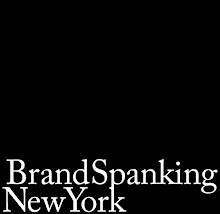-- and I'm talking EVERYTHING -- change over the next 12 months?
Simplicity, simplicity, simplicity.
Or, for the simple folk, only one "simplicity," please.
After a decade of adding functionality ad nauseum, Google and its stark sterility are the multi-billion-dollar gorilla. Oh sure, there’s plenty of technology under its Egyptian cotton homepage, but the site’s enormous success -- in contrast to its minimalist design -- proves less is more. Heavy on the “more.”
Certainly, Google is no more an ad unit than is The New York Times, but it’s time we stopped viewing online ad initiatives so separately from site environments; the user’s eyesight has had every reason to blur these two together. Ads and the sites they occupy have been sharing DNA for years now.
Even offline we see the iPod-itization of our surroundings. (No, not the 20 million iPods sold, which are ubiquitous.) It’s what art gallery curators worldwide have always known -- busily overwhelm your visitors and they’ll quickly exit.
The causes for clumsy interactive products are many, but to my mind, the culprit is two-pronged: first, user feedback just doesn’t make it back to the engineers and designers, so they work in a vacuum and lose touch with customer needs; and second, the immense competition for consumers leads companies to pile more and more toppings onto an already ten-pound pizza.
Online creative, as adroitly as it moves, will follow closer than any other medium. Over the next year, we’ll see the “keep it simple stupid” approach flourish big-time.
P.S. With such an evident surge toward cleanliness and simplicity, mobile devices and their users should benefit greatly (at least in the States, where we’re behind in infrastructure). After this movement is manifest, watch speech recognition software become the hot new sector. When users only have to press the “Send” button to get whatever they want, it can’t get much simpler.
Wednesday, October 26, 2005
Subscribe to:
Post Comments (Atom)


No comments:
Post a Comment